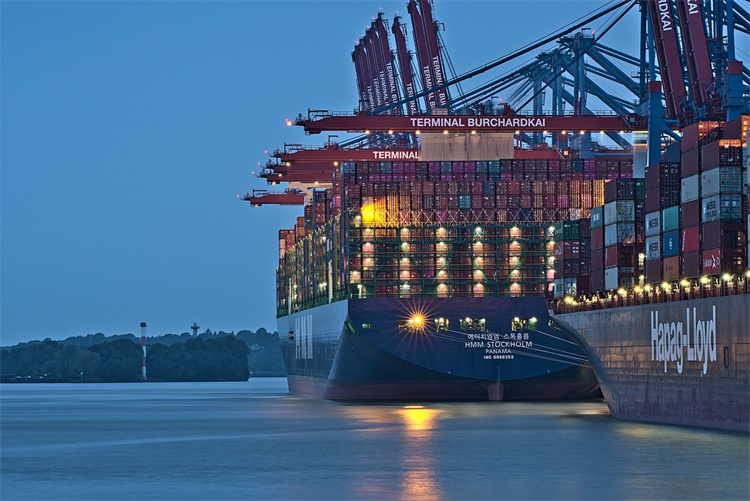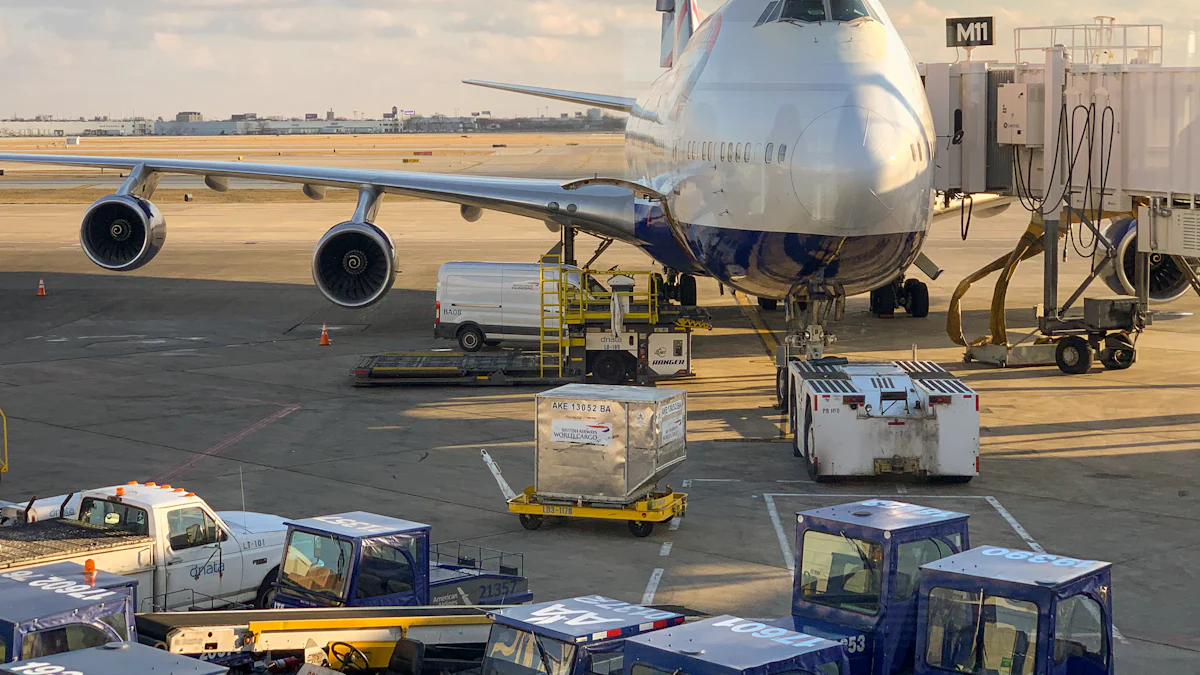Sea Freight or Air Freight: What Should You Choose?

Choosing the right freight method is crucial for businesses to optimize logistics and reduce costs. The two primary options include sea freight and air freight. Each method offers unique advantages and disadvantages. Making an informed decision ensures productive and economical business operations. Understanding these options helps businesses achieve competitive advantages, improve customer satisfaction, and drive growth.
Understanding Sea Freight

Definition and Overview
What is Sea Freight?
Sea freight involves transporting large quantities of goods across oceans using cargo ships. Businesses often use sea freight to ship heavy machinery, bulk commodities, and oversized items. Goods are packed into large metal containers for secure transport. These containers protect the cargo from damage and weather conditions during transit.
Common Uses of Sea Freight
Sea freight services play a vital role in international trade. Companies use sea freight to move products over long distances. Common uses include:
Transporting oil and defense equipment
Shipping aircraft parts and large vehicles
Delivering bulk commodities like grains and minerals
Pros of Sea Freight
Cost-Effectiveness
Sea freight offers significant cost savings, especially for large shipments. The ability to transport high volumes of goods in a single trip reduces per-unit shipping costs. This makes sea freight an economical choice for businesses with substantial cargo.
High Capacity
Cargo ships can carry vast amounts of goods. High-volume orders or oversized items are well-suited for sea transport. Businesses can choose between Full Container Load (FCL) and Less than Container Load (LCL) options based on shipment size.
Suitable for Large and Heavy Goods
Sea freight excels in transporting large and heavy goods. Items like industrial machinery, construction equipment, and bulk commodities benefit from the spacious cargo holds of ships. The fewer restrictions on weight and size make sea freight ideal for such shipments.
Cons of Sea Freight
Slower Transit Times
Sea freight generally takes longer than air freight. Ocean voyages can span several weeks, depending on the distance and route. Businesses must plan for extended lead times when choosing sea freight.
Limited Accessibility
Ports serve as the primary hubs for sea freight. Not all locations have direct access to ports, requiring additional transportation to reach inland destinations. This can add complexity and time to the logistics process.
Potential for Delays
Weather conditions, port congestion, and customs procedures can cause delays in sea freight. Ships may face disruptions due to storms or other maritime challenges. Businesses must account for these potential delays when scheduling deliveries.
Understanding Air Freight

Definition and Overview
What is Air Freight?
Air freight involves transporting goods via airplane. This method suits high-value or time-sensitive shipments. Airlines offer various services to cater to different needs. Air freight ensures quick delivery, making it ideal for urgent shipments.
Common Uses of Air Freight
Businesses use air freight for several purposes:
Shipping perishable goods like food and pharmaceuticals
Transporting expensive items such as electronics and jewelry
Delivering critical components and machinery parts
Pros of Air Freight
Speed and Efficiency
Air freight provides unmatched speed. Goods can reach their destination within days. This rapid transit time benefits businesses with tight deadlines. Minimal handling ensures secure and efficient delivery.
High Security
Airlines maintain strict security protocols. Air freight offers a high level of protection for valuable shipments. The controlled environment reduces the risk of theft or damage.
Global Reach
Air freight services cover a vast network of destinations. Airlines operate flights to major cities worldwide. This global reach facilitates international trade and commerce.
Cons of Air Freight
Higher Costs
Air freight incurs higher costs compared to other modes. The expense includes fuel, security, and handling fees. Businesses must evaluate if the benefits justify the additional cost.
Limited Capacity
Airplanes have limited cargo space. Air freight suits smaller shipments rather than bulk goods. Larger items may face restrictions due to size and weight limitations.
Environmental Impact
Air freight generates significant greenhouse gas emissions. The environmental footprint is larger compared to sea freight. Businesses should consider sustainability when choosing this option.
Comparative Analysis
Cost Comparison
Initial Costs
Sea freight often presents a more economical option for businesses. The initial costs for shipping by sea tend to be lower, especially for large shipments. Cargo ships can transport vast quantities of goods in one trip, reducing the cost per unit. This cost-effectiveness makes sea freight an attractive choice for budget-conscious companies.
Air freight, on the other hand, incurs higher initial costs. The expense includes fuel, security, and handling fees. Businesses must evaluate whether the speed and efficiency of air freight justify these additional expenses.
Long-term Costs
In the long term, sea freight can offer further savings. The ability to ship large volumes at once reduces the need for frequent shipments. This can lower overall transportation costs over time. However, businesses must consider potential delays and longer transit times when calculating long-term expenses.
Air freight may result in higher long-term costs due to its premium pricing. Frequent use of air freight can significantly impact a company's logistics budget. However, the faster delivery times can help reduce inventory costs and improve cash flow.
Speed and Efficiency
Transit Times
Air freight stands out for its speed. Goods transported by air usually reach their destination within 2-4 days. This rapid transit time benefits businesses with tight deadlines or time-sensitive shipments. Air freight ensures quicker product turnaround, which can lower inventory costs and meet deadlines effectively.
Sea freight takes considerably longer. Ocean voyages can span several weeks, depending on the distance and route. Businesses must plan for extended lead times when choosing sea freight. However, for non-urgent shipments, the slower transit time may not pose a significant issue.
Reliability
Air freight offers a high level of reliability. Airlines maintain strict schedules and provide consistent on-time delivery. Even if delays occur, air cargo usually arrives just a few days off target. This reliability makes air freight a preferred choice for critical deliveries.
Sea freight faces more variability. Weather conditions, port congestion, and customs procedures can cause delays. Ships may experience disruptions due to storms or other maritime challenges. Businesses must account for these potential delays when scheduling deliveries.
Capacity and Volume
Types of Goods
Sea freight accommodates a wide range of goods. Cargo ships can transport heavy machinery, bulk commodities, and oversized items. The spacious cargo holds and fewer restrictions on weight and size make sea freight suitable for various types of shipments.
Air freight suits high-value or time-sensitive goods. Common items shipped by air include perishable goods, electronics, and pharmaceuticals. The controlled environment and quick transit times ensure the safe and efficient delivery of these products.
Volume Limitations
Sea freight excels in handling large volumes. Cargo ships can carry vast amounts of goods in a single trip. Businesses can choose between Full Container Load (FCL) and Less than Container Load (LCL) options based on shipment size.
Air freight has limited capacity. Airplanes have restricted cargo space, making air freight more suitable for smaller shipments. Larger items may face restrictions due to size and weight limitations. Businesses must consider these constraints when planning shipments.
Environmental Impact
Carbon Footprint
Sea freight generates fewer greenhouse gas emissions compared to air freight. Cargo ships use less fuel per ton-mile, making sea transport more environmentally friendly. Businesses seeking to reduce their carbon footprint often prefer sea freight for this reason.
Air freight produces significantly higher emissions. Airplanes consume large amounts of fuel, resulting in a substantial environmental impact. Companies must weigh the benefits of faster delivery against the ecological consequences.
Sustainability Considerations
Sustainability plays an essential role in choosing a freight method. Sea freight supports sustainable practices by offering a lower carbon footprint. The ability to transport large volumes in one trip further enhances its sustainability.
Air freight poses challenges for sustainability. The high fuel consumption and emissions make it less eco-friendly. Businesses committed to green initiatives may need to explore alternative options or offset their carbon emissions when using air freight.
Accessibility and Reach
Global Network
Sea freight and air freight both offer extensive global networks. Cargo ships connect major ports worldwide, facilitating international trade. This network supports the movement of goods across continents efficiently.
Air freight provides access to a vast number of destinations. Airlines operate flights to major cities globally, ensuring quick and reliable delivery. The extensive reach of air freight makes it ideal for urgent international shipments.
Port and Airport Availability
Ports serve as critical hubs for sea freight. Major ports around the world handle large volumes of cargo daily. However, not all locations have direct access to ports, requiring additional transportation to inland destinations.
Airports play a vital role in air freight logistics. Major airports support the rapid movement of goods through efficient handling and customs procedures. The availability of airports in key locations enhances the accessibility of air freight services.
Making the Right Choice
Factors to Consider
Nature of Goods
The nature of goods plays a crucial role in selecting the appropriate freight method. Air freight suits high-value or time-sensitive items. Electronics, pharmaceuticals, and perishable goods benefit from the quick transit times. Sea freight accommodates large and heavy goods. Industrial machinery, bulk commodities, and oversized items fit well with sea transport.
Budget Constraints
Budget constraints influence the choice between air freight and sea freight. Air freight incurs higher costs due to fuel, security, and handling fees. Businesses with limited budgets may find sea freight more economical. The ability to ship large volumes at once reduces per-unit shipping costs. This cost-effectiveness makes sea freight attractive for budget-conscious companies.
Time Sensitivity
Time sensitivity determines the urgency of the shipment. Air freight offers unmatched speed, delivering goods within days. Businesses with tight deadlines or urgent shipments benefit from this rapid transit time. Sea freight takes longer, often spanning several weeks. Non-urgent shipments can afford the extended lead times associated with sea transport.
Case Studies
Example 1: Small Electronics
A tech company needs to ship small electronics to international markets. The high value and time sensitivity of the products make air freight the ideal choice. Quick delivery ensures that the latest gadgets reach consumers promptly. The controlled environment of air freight protects delicate electronics from damage.
Example 2: Bulk Commodities
A mining company exports bulk commodities like iron ore and coal. The large volume and weight of the shipment make sea freight the best option. Cargo ships can handle the substantial load efficiently. The cost-effectiveness of sea freight reduces transportation expenses for the mining company.
The comparative analysis highlights the distinct advantages and disadvantages of sea freight and air freight. Aligning the freight choice with business needs ensures optimal logistics performance. Businesses should consider factors like cost, speed, capacity, and environmental impact before making a decision. Balancing cost, speed, and efficiency remains crucial for effective supply chain management. Reliable freight services significantly impact business success, emphasizing the importance of thoughtful decision-making.
See Also
Revealing the Latest in Sea Freight Logistics for 2024
Analyzing the Future of Less Than Truckload Freight
Uncovering Top Global Logistics Companies: A Complete Guide
